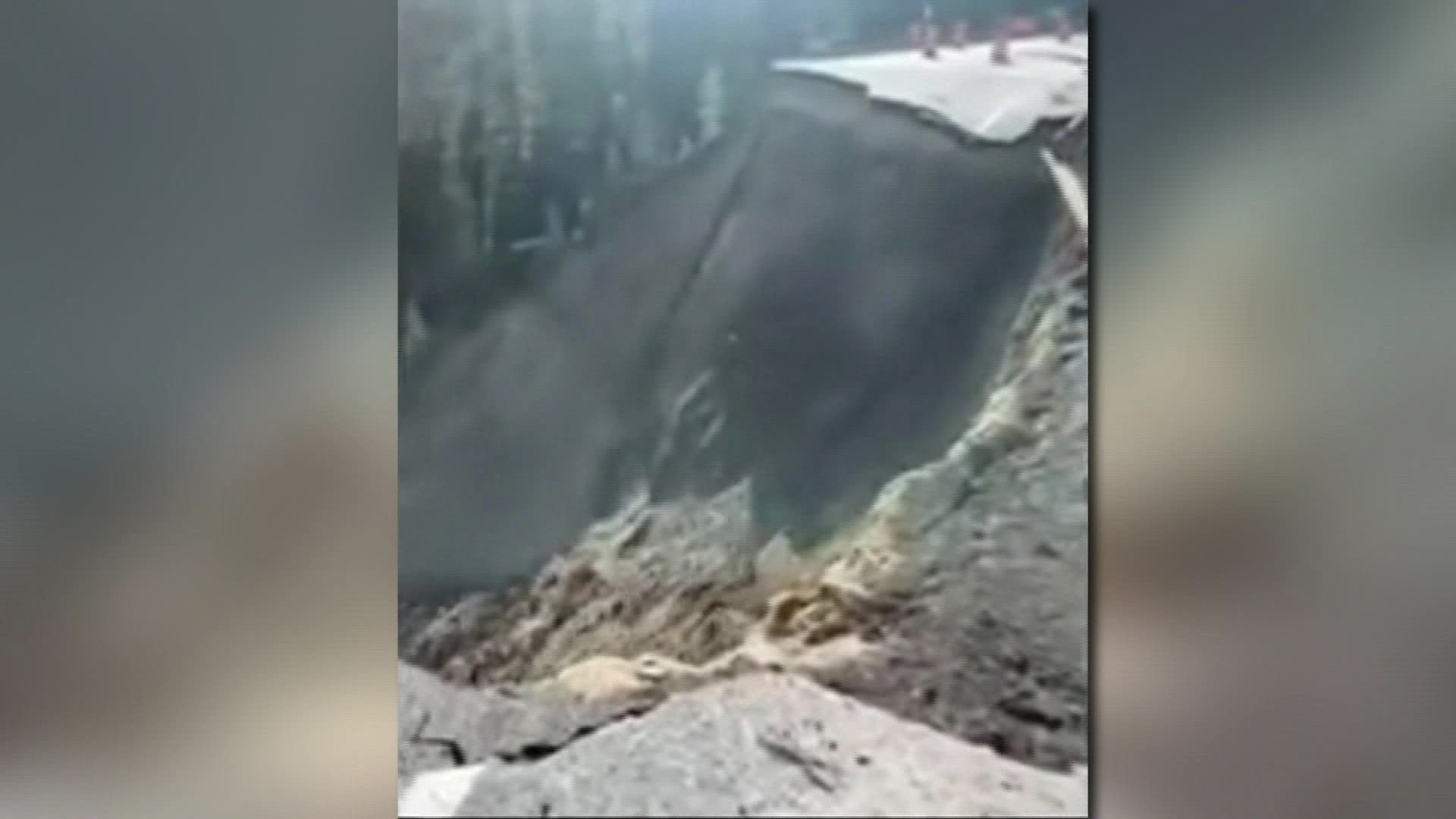NORFOLK, Va. — A landslide has shut down a major highway near the Idaho-Wyoming border, triggering discussion about the possibility of similar issues arising elsewhere.
The slide sent both lanes crashing into a ravine near Teton Pass Saturday. It's causing a mountain of problems for thousands of commuting workers as the Yellowstone region enters its busy summer season.
Officials say there were signs the highway was slipping. A crack opened and the road dropped a bit on Thursday but was patched up, allowing traffic to move again.
But a mudslide down the road closed the highway again — ultimately saving lives because no one was driving along the stretch when the collapse happened.
Highway 22 is expected to remain closed for weeks.
Since most of southeast Virginia and eastern North Carolina is coastal plain we don't worry much about landslides here. But it's still good to know what they are, and what causes them.
Landslides happen when masses of rock, earth, or debris move down a slope. They're caused by a variety of things — including heavy rains, droughts, earthquakes and volcanic eruptions.
You can also have massive rock or landslides when cycles of wet conditions are followed by hard freezes. Water fills into small cracks and crevices, and the water freezes and expands creating more pressure and expanding the cracks.
Eventually, the materials on a slope can't be supported by the material underneath it — causing it to collapse and slide.
While much of Hampton Roads doesn't have sloping terrain, it's important to know that landslides can happen almost anywhere at any time. If you travel or hike through the more mountainous regions like the Blue Ridge, you are wise to stay alert to the threat!

